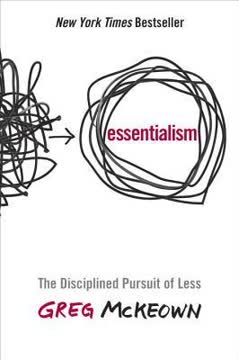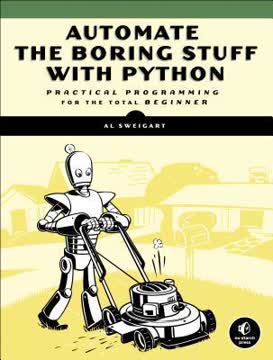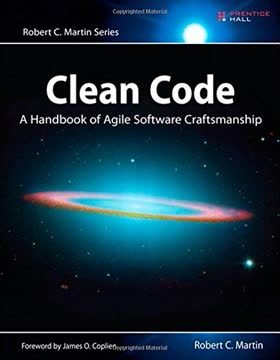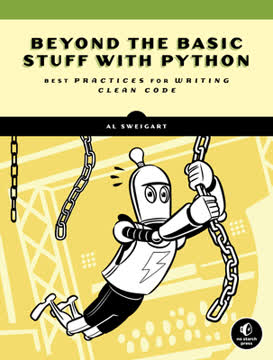Key Takeaways
1. Perception Control Dictates Human Society
Acquiescence to tyranny is the death of the spirit.
Control of Perception. The foundation of human control and oppression lies in the control of perception. By dictating perception, those in power can influence behavior and, ultimately, shape the nature of human society.
Information as a Weapon. Control of information is crucial for maintaining control of perception. By controlling the flow of information through media, education, and other channels, those in power can manipulate what people believe to be true.
Fear as a Tool. Fear is a powerful tool for controlling perception. By instilling fear, those in power can manipulate people into giving up their freedoms and acquiescing to tyranny.
2. Knowledge Separates the Enslaved from the Free
Belief can be manipulated. Only knowledge is dangerous.
Two Worlds. There exist two distinct "worlds": one of mass ignorance and manipulated belief, and another of hoarded knowledge and secret agendas. The key difference between these worlds is access to information and the ability to think critically.
The Postage Stamp Consensus. The "Postage Stamp Consensus" is a narrow band of perceived knowledge and possibility that is "taught" in schools, universities, and the mainstream media. It serves to limit critical thinking and maintain control over the population.
The Power of Knowledge. Knowledge is the key to breaking free from the perceptual prison. By seeking out and understanding the truth, individuals can resist manipulation and reclaim their freedom.
3. The Cult's Web: A Hierarchy of Control
How the few control the many and always have – the many do whatever they’re told.
Global Cult Network. A global network of secret societies and semi-secret groups dictates the direction of society through governments, corporations, and authorities of every kind. This network operates in the shadows, coordinating actions to achieve a single global outcome.
Pyramidal Structure. The Cult operates through a pyramidal hierarchy of imposition and acquiescence. The inner core imposes its will on the level immediately below, which then imposes on the next level, and so on, until it reaches the mass of the population.
Compartmentalization. Compartmentalization is key to maintaining control. Individuals within the hierarchy are only given the information they need to perform their specific tasks, preventing them from seeing the big picture and challenging the agenda.
4. Problem-Reaction-Solution: Engineering Consent
It’s all about controlling perception and Renegade Minds can see through that while programmed minds cannot when they are ignorant of both the planned outcome and the manipulation techniques employed to secure that end.
The PRS Technique. The Problem-Reaction-Solution (PRS) technique involves creating a problem (or the illusion of one), generating a reaction from the public, and then offering a solution that advances a pre-determined agenda. This technique is used to manipulate public opinion and engineer consent for policies that would otherwise be met with resistance.
The "Covid" Hoax. The "Covid" hoax is presented as a prime example of the PRS technique. By creating a climate of fear and uncertainty, those in power were able to justify unprecedented restrictions on freedom and implement policies that further their agenda.
Identifying the Beneficiaries. The antidote to PRS is to ask who benefits from the proposed solution. Invariably, the answer will be those who seek to centralize power and control, often at the expense of individual liberty.
5. The Power of BIFs: Built-in Functions for Efficiency
Before your write new code, think BIF.
Leveraging Existing Tools. Python's built-in functions (BIFs) offer pre-built solutions to common programming problems, reducing the need to write custom code from scratch. This promotes efficiency and code reusability.
Exploring Python's Arsenal. Python 3 includes over 70 BIFs, providing a wide range of functionality for tasks such as:
- Data manipulation
- Type conversion
- Input/output operations
Learning and Utilizing BIFs. Instead of trying to memorize all the BIFs, focus on understanding their purpose and how to access their documentation. The dir(__builtins__) command in the Python shell can list all BIFs, and the help(BIF_name) command provides detailed information about a specific BIF.
6. The Perils of Overcomplexity: Simplify with Functions
Don’t repeat code; create a function.
Code Reusability. When code repeats, create a reusable function. This reduces code duplication, improves readability, and simplifies maintenance.
Functions for Organization. Functions help organize code into logical units, making it easier to understand and modify. This is especially important as programs grow in complexity.
Recursion for Elegance. Recursive functions can elegantly solve problems that involve repetition or self-reference. By invoking itself, a recursive function can process nested data structures or perform iterative tasks with minimal code.
7. Modules: Organizing Code for Reusability
Reusable code is great, but a shareable module is better.
Code Organization. Modules are text files containing Python code, allowing for the organization of functions and other code elements into reusable units. This promotes code clarity and maintainability.
Sharing and Collaboration. By sharing code as a Python module, you open up your code to the entire Python community, fostering collaboration and innovation.
Distribution Utilities. Python provides distribution utilities that simplify the process of building, packaging, and distributing modules. This makes it easy to share your code with others and install modules created by others.
8. Comments: Documenting Your Code for Collaboration
It’s always a good idea to include comments with your code.
Code Documentation. Comments are essential for documenting code, explaining its purpose, functionality, and usage. This makes it easier for others (and yourself) to understand and maintain the code.
Triple Quotes for Multiline Comments. Python supports multiline comments using triple quotes ("""..."""), allowing for detailed explanations and documentation within the code.
Commenting for Clarity. Well-written comments enhance code readability and make it easier to collaborate with other developers. This is especially important when sharing your code as a module.
9. Exception Handling: Graceful Error Management
Try first, then recover.
Robust Code. Exception handling is a mechanism for dealing with errors and unexpected situations that may arise during program execution. This allows your code to handle errors gracefully and prevent crashes.
The try Statement. The try statement allows you to enclose code that might raise an exception. If an exception occurs within the try block, the program flow is transferred to the except block.
The except and finally Blocks. The except block specifies the code to execute if a particular exception occurs. The finally block specifies code that will always execute, regardless of whether an exception was raised or not.
10. Persistence: Saving Data for Future Use
Programs produce data.
Data Storage. Persistence is the ability to save data to a file or database, allowing you to use it again at some later date and time. This is essential for programs that need to store and retrieve information.
File I/O. Python provides tools for writing data to files, including the open() BIF and the print() BIF with the file argument.
Pickling Data. The pickle module allows you to efficiently store Python data structures to disk. This is a convenient way to save complex data for later use.
11. Data Munging: Wrangling Data into Shape
Data comes in all shapes and sizes, formats and encodings.
Data Transformation. Data often comes in various formats and encodings, requiring manipulation and transformation to a common format for efficient processing, sorting, and storage.
Sorting and Deduplication. Python provides tools for sorting data, such as the sort() method and the sorted() BIF. Sets can be used to efficiently remove duplicate values from a collection.
List Comprehensions. List comprehensions offer a concise way to transform lists, allowing you to apply operations to each item and create a new list in a single line of code.
12. Custom Data Objects: Bundling Code with Data
It’s important to match your data structure choice to your data.
Data Structures. Choosing the right data structure is crucial for efficient code and data management. Python offers lists, sets, and dictionaries, each with its own strengths and weaknesses.
Dictionaries for Association. Dictionaries allow you to associate data with names (keys) rather than numbers, enabling speedy lookup and organization.
Classes for Customization. When built-in data structures don't suffice, the class statement allows you to define your own custom data objects, bundling code (methods) with data (attributes) for enhanced organization and functionality.
Last updated:
FAQ
What is "Perceptions of a Renegade Mind" by David Icke about?
- Global Cult Conspiracy: The book exposes a secretive Cult’s agenda to transform humanity into synthetic-biological entities connected to artificial intelligence and a global Smart Grid.
- Reality as Simulation: Icke argues that our world is a holographic simulation manipulated by non-human forces (Archons) to control human perception and consciousness.
- Covid-19 as a Tool: The so-called ‘Covid vaccine’ is presented as a body-changer, central to the Cult’s plan for integrating humans into a controlled, AI-driven system.
- Wetiko Mind-Virus: The book introduces the concept of Wetiko, a parasitic consciousness that drives global manipulation, fear, and control.
Why should I read "Perceptions of a Renegade Mind" by David Icke?
- Understanding Hidden Control: The book provides a comprehensive framework for recognizing the forces behind global events, especially the Covid-19 pandemic and vaccine rollout.
- Expanding Consciousness: Icke encourages readers to move beyond five-sense perception, reconnect with their infinite self, and use love as a tool for liberation.
- Practical Empowerment: The book offers actionable advice on resisting tyranny, understanding Common Law, and reclaiming personal and collective freedom.
- Challenging Mainstream Narratives: Readers seeking alternative perspectives on current events and societal changes will find detailed critiques and new frameworks for understanding.
What are the key takeaways from "Perceptions of a Renegade Mind" by David Icke?
- Perception is Controlled: Human perception is manipulated by a global Cult using technology, media, and psychological operations to maintain power.
- Covid-19 as Psyop: The pandemic and vaccines are described as tools for genetic manipulation, surveillance, and the transition to a synthetic human society.
- Wetiko and Fear: The mind-virus Wetiko thrives on fear and division, and overcoming it requires heart-centered awareness and non-cooperation.
- Non-Compliance is Power: The book stresses that tyranny is enabled by public acquiescence, and reclaiming freedom starts with individual and collective refusal to comply.
What is the Cult agenda according to "Perceptions of a Renegade Mind" by David Icke, and how does it relate to the Covid vaccine?
- Human 2.0 Transformation: The Cult aims to replace natural humans with synthetic-biological beings (Human 2.0) connected to AI and a global Smart Grid.
- Vaccines as Operating Systems: Covid vaccines are described as containing nanotechnology and synthetic materials that act as biosensors and reprogram human biology.
- Genetic and Spiritual Manipulation: The vaccines are alleged to alter genetics and disconnect the soul from the body, facilitating deeper control over humanity.
- Synthetic Biology Program: This agenda includes phasing out natural reproduction and replacing it with technological alternatives.
How does David Icke explain human perception and reality in "Perceptions of a Renegade Mind"?
- Limited Sensory Input: Humans perceive only a tiny fraction of the electromagnetic spectrum, and the brain filters millions of sensations down to a manageable few.
- Holographic Simulation: Reality is described as a hologram, an interference pattern decoded by the brain into a three-dimensional illusion.
- Manipulation by Archons: Non-human forces (Archons) and the Cult manipulate this simulation to keep humanity in servitude.
- Consciousness Beyond the Senses: True freedom comes from expanding awareness beyond the five senses and the illusory Phantom Self.
What is Wetiko, and why is it important in "Perceptions of a Renegade Mind" by David Icke?
- Mind-Virus Definition: Wetiko is a Native American term for a parasitic consciousness that embodies evil, fear, and control.
- Disconnection from True Self: Wetiko disconnects the five-sense mind from the true, expanded awareness, making people susceptible to manipulation.
- Driver of Global Events: The book claims Wetiko is behind historical and current atrocities, including the Covid-19 pandemic and mass manipulation.
- Path to Freedom: Overcoming Wetiko requires opening the heart, embracing love, and refusing to cooperate with tyranny.
How does "Perceptions of a Renegade Mind" by David Icke describe the role of technology and AI in human control?
- Smart Grid Vision: The Cult’s goal is to connect all humans and technology into a global Smart Grid controlled by AI.
- Nanotechnology in Vaccines: Covid vaccines are said to contain nanobots and biosensors that enable remote manipulation of thought and behavior.
- Brain-Computer Interfaces: Technologies like BCIs are designed to create a hive mind, erasing individuality and enabling mass control.
- Surveillance and Addiction: The book warns that addiction to digital devices is a step toward technological enslavement and frequency manipulation.
What does "Perceptions of a Renegade Mind" by David Icke say about the existence of viruses and the Covid-19 pandemic?
- Virus Isolation Controversy: The book argues that SARS-CoV-2 has never been scientifically isolated or purified, casting doubt on its existence.
- PCR Test Critique: PCR tests are criticized for amplifying genetic material from various sources, leading to false positives and a fabricated pandemic.
- Pandemic as a Hoax: Covid-19 is described as a planned psychological operation to justify global control, lockdowns, and mass vaccination.
- Depopulation and Control: The pandemic is framed as a cover for introducing synthetic biological agents aimed at depopulation and societal transformation.
How does "Perceptions of a Renegade Mind" by David Icke address gender and transgenderism?
- Transhumanism Link: The book claims transgender activism is a step toward eliminating gender, paving the way for synthetic, non-reproductive humans (Human 2.0).
- Targeting Children: Icke highlights the use of puberty blockers and transition surgeries on children as part of the Cult’s agenda to erase parental rights and traditional gender roles.
- War on Men and Women: The Cult is said to be orchestrating a campaign to erode the rights and status of both men and women, advancing gender fusion.
- Facilitating Synthetic Human Program: The ultimate goal is to create a no-gender, technologically controlled population.
What practical advice does David Icke offer in "Perceptions of a Renegade Mind" for resisting control?
- Non-Cooperation: Icke emphasizes the power of refusing to comply with mask mandates, vaccine passports, and other forms of tyranny.
- Understanding Common Law: The book encourages learning about Common Law to challenge Statute Law and assert individual rights, including making citizen’s arrests of abusive authorities.
- Heart-Centered Awareness: Opening the heart chakra and expanding consciousness are presented as spiritual foundations for resistance.
- Unity and Courage: The book calls for collective unity and courage in the face of manipulation and control.
What are the best quotes from "Perceptions of a Renegade Mind" by David Icke and what do they mean?
- On AI and Transhumanism: “I believe that at the end of the century the use of words and general educated opinion will have altered so much that one will be able to speak of machines thinking without expecting to be contradicted.” (Alan Turing) – Highlights the normalization of AI and the transhumanist agenda.
- On Perception and Reality: “You don’t just look at a rainbow, you create it.” – Emphasizes the book’s theme that reality is a construct of perception, subject to manipulation.
- On Wetiko and Fear: “Fear was the ‘fall’, the fall into low-frequency ignorance and illusion – fear is False Emotion Appearing Real.” – Explains how fear is used as a tool of control and the importance of overcoming it.
- On Resistance: “Fascism is not imposed by fascists – there are never enough of them. Fascism is imposed by the population acquiescing to fascism.” – Stresses the necessity of individual and collective refusal to comply with oppressive systems.
How does "Perceptions of a Renegade Mind" by David Icke connect the Covid-19 pandemic to broader societal and technological changes?
- Pandemic as Catalyst: The book argues that Covid-19 is used to accelerate the transition to a technocratic, AI-controlled society.
- Lockdowns and Surveillance: Measures like lockdowns, vaccine passports, and digital IDs are described as steps toward total surveillance and loss of freedoms.
- Integration with Smart Grid: The pandemic response is linked to the rollout of the global Smart Grid and Internet of Bodies, merging humans with technology.
- Societal Transformation: Icke connects pandemic policies to the erosion of civil liberties, traditional values, and the rise of a synthetic, controlled population.
Review Summary
Head First Python receives mixed reviews. Many find it engaging and effective for beginners, praising its hands-on approach and clear explanations. Readers appreciate the coverage of good practices and real-world applications. However, some criticize the book's style as cutesy and distracting. Others note outdated content and a lack of depth in certain areas. The book's focus on Flask and web development is contentious, with some finding it helpful and others preferring more core Python content. Overall, it's seen as a solid introduction for those new to programming or Python, but may not suit everyone's learning style.
Similar Books










Download PDF
Download EPUB
.epub digital book format is ideal for reading ebooks on phones, tablets, and e-readers.




